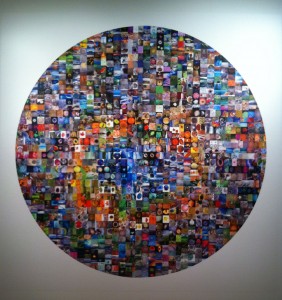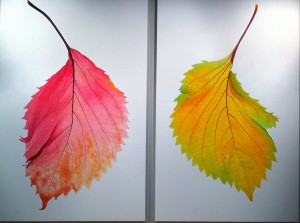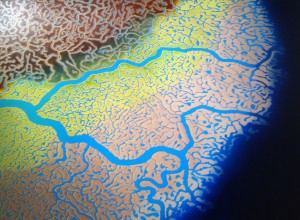


By Adelle Brodbeck
Transcript Reporter
The Ross Art Museumis currently displaying the work of Caleb Cain Marcus as a supplement to this year’s Sagan National Colloquium (SNC), the subject of which is global warming.
Marcus’s exhibit, titled “A Portrait of Ice,” provides an artistic perspective to the ongoing problem of climate change and how it has diminished the planet’s number of glaciers. His photographs were shot around the world and show the universality of the climate change problem.
The ten photographs in the exhibit showcase glaciers from five different countries: New Zealand, Argentina, Iceland, Norway and Alaska. Marcus said the contrast between city life and rural made him want to travel more and led him to photograph ice.
“I grew up in the mountains of Colorado; living in New York City caused me to miss the silence and emptiness of nature,” he said. “I traveled down to Patagonia and visited Perito Moreno, which sparked my interest and began the project.”
Marcus said the university previously approached him to present an exhibit and it worked out that his ice exhibit would coincide with the 2013 SNC.
Craig Jackson, part-time professor of mathematics, is co-directing the 2013 SNC with Professor of Botany Laurel Anderson. Jackson said they were lucky to have the opportunity to display Marcus’s work alongside the colloquium because it is usually much more difficult to bring an artist’s collection than it is to invite a speaker to appear.
“Justin Kronewetter (director of Ross Art Museum) has to start scheduling his exhibits very early due to all the logistics of getting large collections transported to and from the museum,” Jackson said. “Caleb’s work fit extremely well with the theme of this year’s colloquium and I give a lot of credit to Justin for bringing Caleb to OWU.”
Jackson said one of the major concerns in organizing this year’s colloquium was to demonstrate the universality of environmental issues.
“The message we hope to convey is that climate and climate change are important topics that all disciplines have a stake in addressing,” he said.
Also currently featured in the museum is painter and activist John Sabraw. Like Marcus, Sabraw focuses his art on nature, but with a different perspective.
According to his artist’s statement, his exhibit, “Luminous,” “is constructed of four distinct, yet interrelated bodies of work. (He) looks for idiosyncratic connections between things, simultaneous macro and micro events, the compression of time and distance, the glory of our universe and natural and cosmological processes.”
Sabraw’s art explores various components of our natural world, from the smallest cells to the largest oceans. As part of his environmental activism, Sabraw used raw materials as a substitute for mass-produced paint products. Through his involvement in an Ohio sustainability group, Sabraw discovered a new way to create his paintings.
“(My sustainability group) toured the area of southern Ohio and I was struck by the local streams that are largely orange, red and brown as if a mud slide was happening further upstream,” he said. “I found out that these colors were mainly from iron oxide, the same raw materials used to make many paint colors, but this iron oxide was from polluted water from abandoned coal mines. I thought it would be fantastic to use this toxic flow to make paintings rather than with imported iron oxide from China.”
Sabraw utilized local natural resources to create paintings of vast river views and larger-than-life replications of tree leaves. Sabraw’s exhibit also features a piece titled “Unified Theory,” which is a digital print composed of hundreds of tiny photographs of various objects found in nature. From a distance the print appears to be just a giant colorful circle, but up close it is immediately apparent the overwhelming amount of photographs that went into the piece.
OWU Librarian Jillian Maruskin attended the exhibits’ opening. She said she was enthralled with Sabraw’s work.
“I was absolutely transfixed,” she said of Sabraw’s paintings. “To me they looked three dimensional and I wanted so badly to touch them.”
Maruskin said she was less intrigued by and conflicted over Marcus’s ice photographs.
“There were only two that I could look at for more than a few seconds,” she said. “They were unsettling, but I can’t explain why. Perhaps that was his intention.”
Caleb Cain Marcus’ exhibit, “A Portrait of Ice”, will be on display in the Ross Art Museum through Oct. 6 and the schedule of SNC speakers can be found at snc.owu.edu